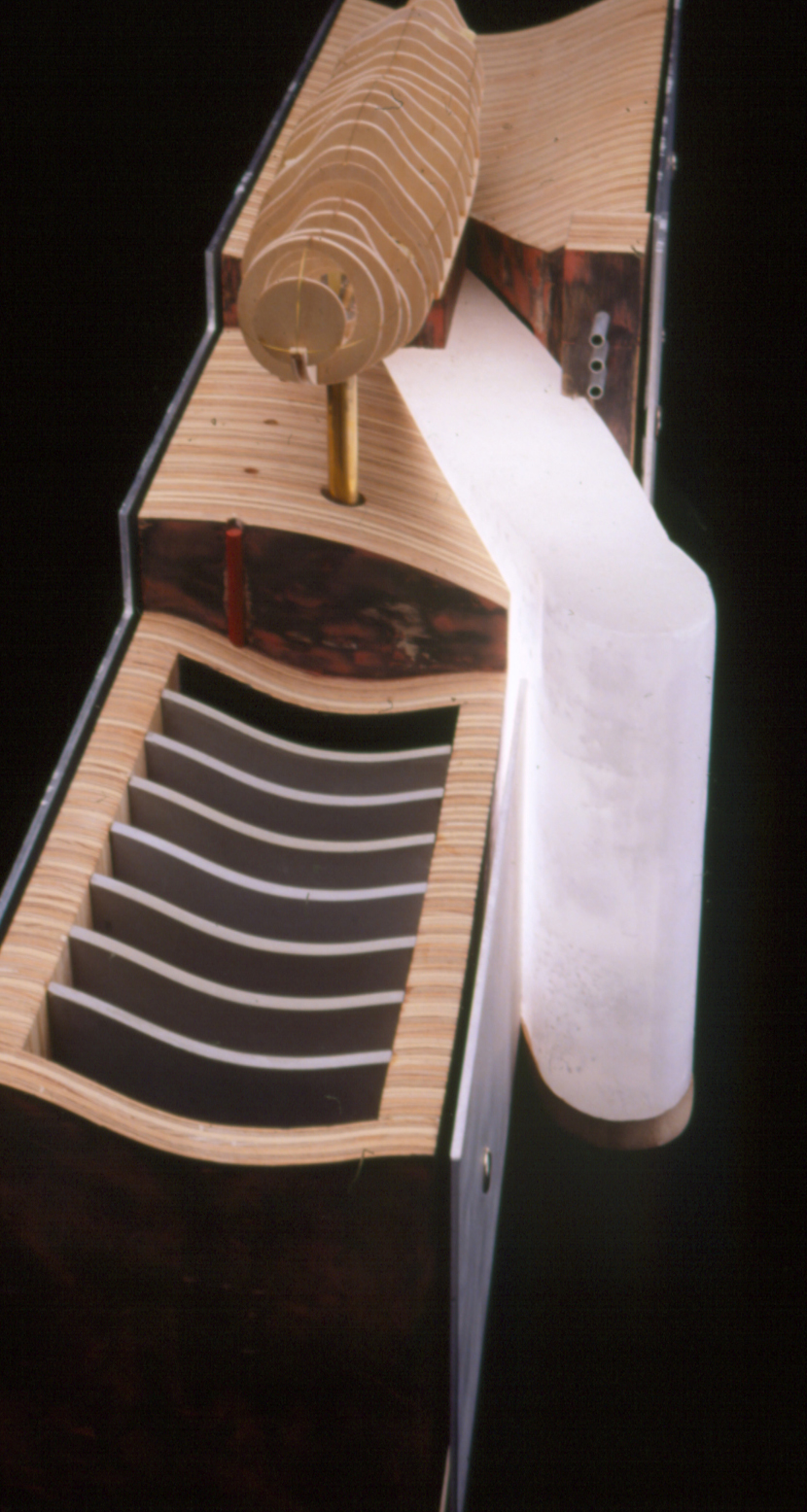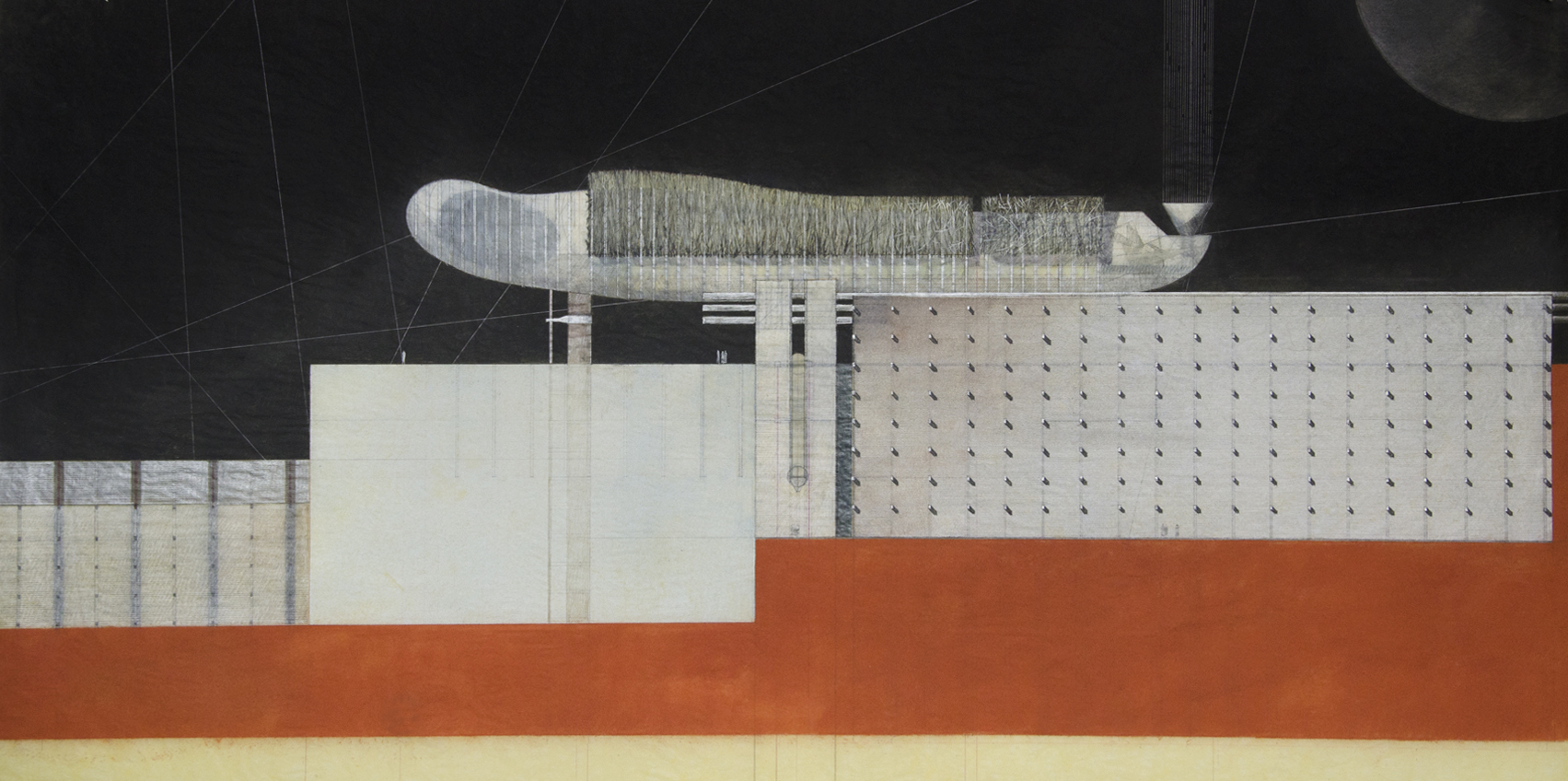
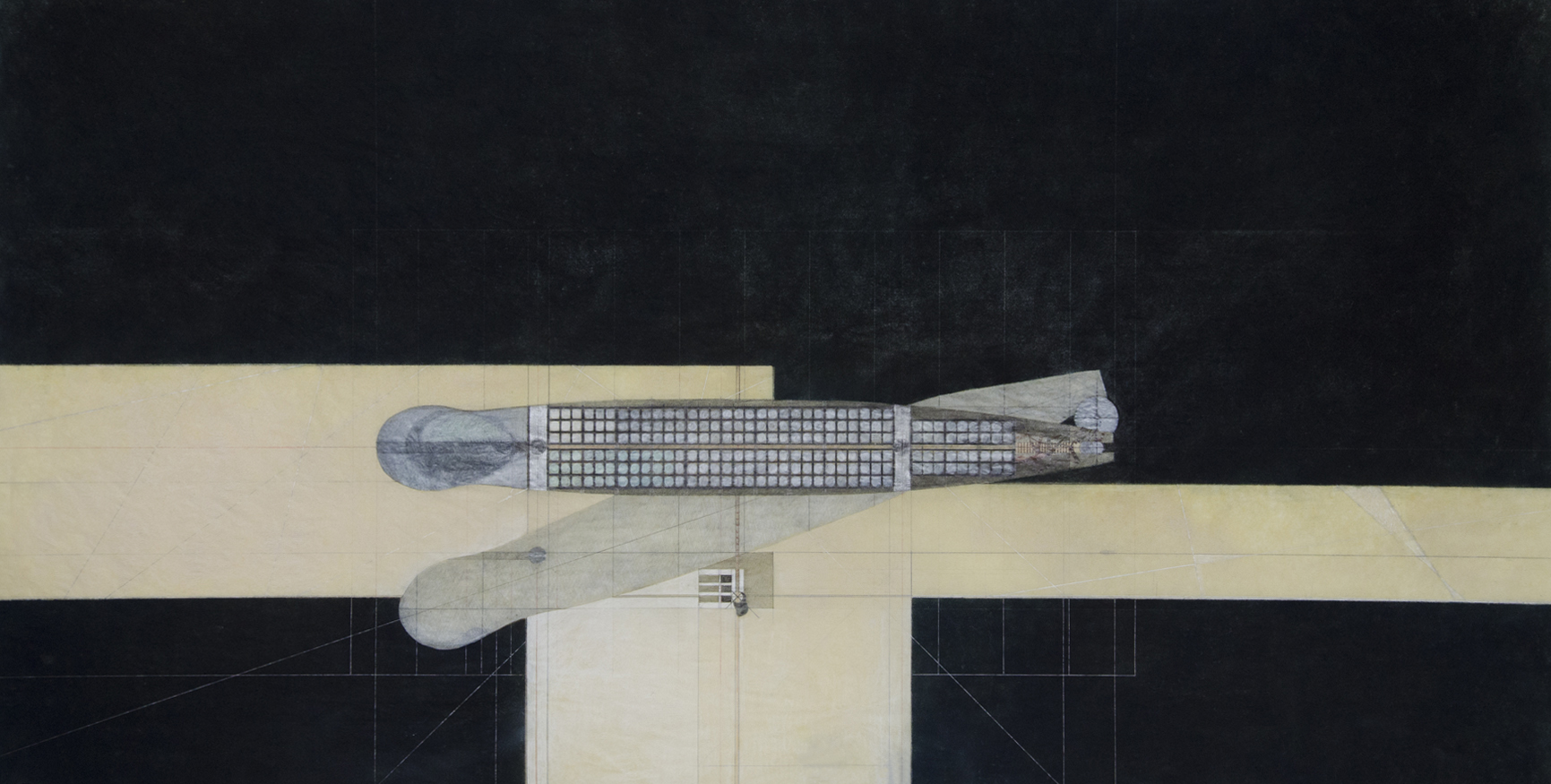
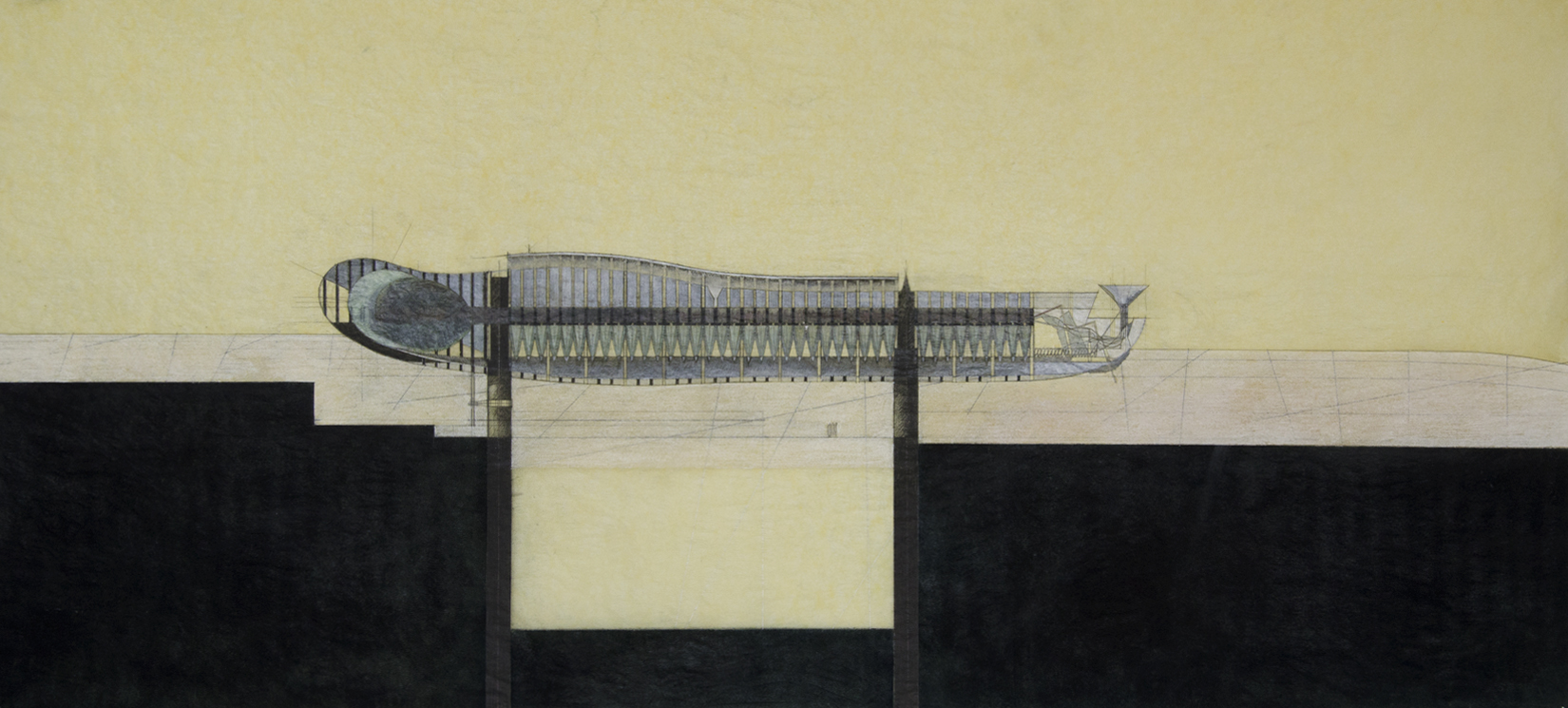
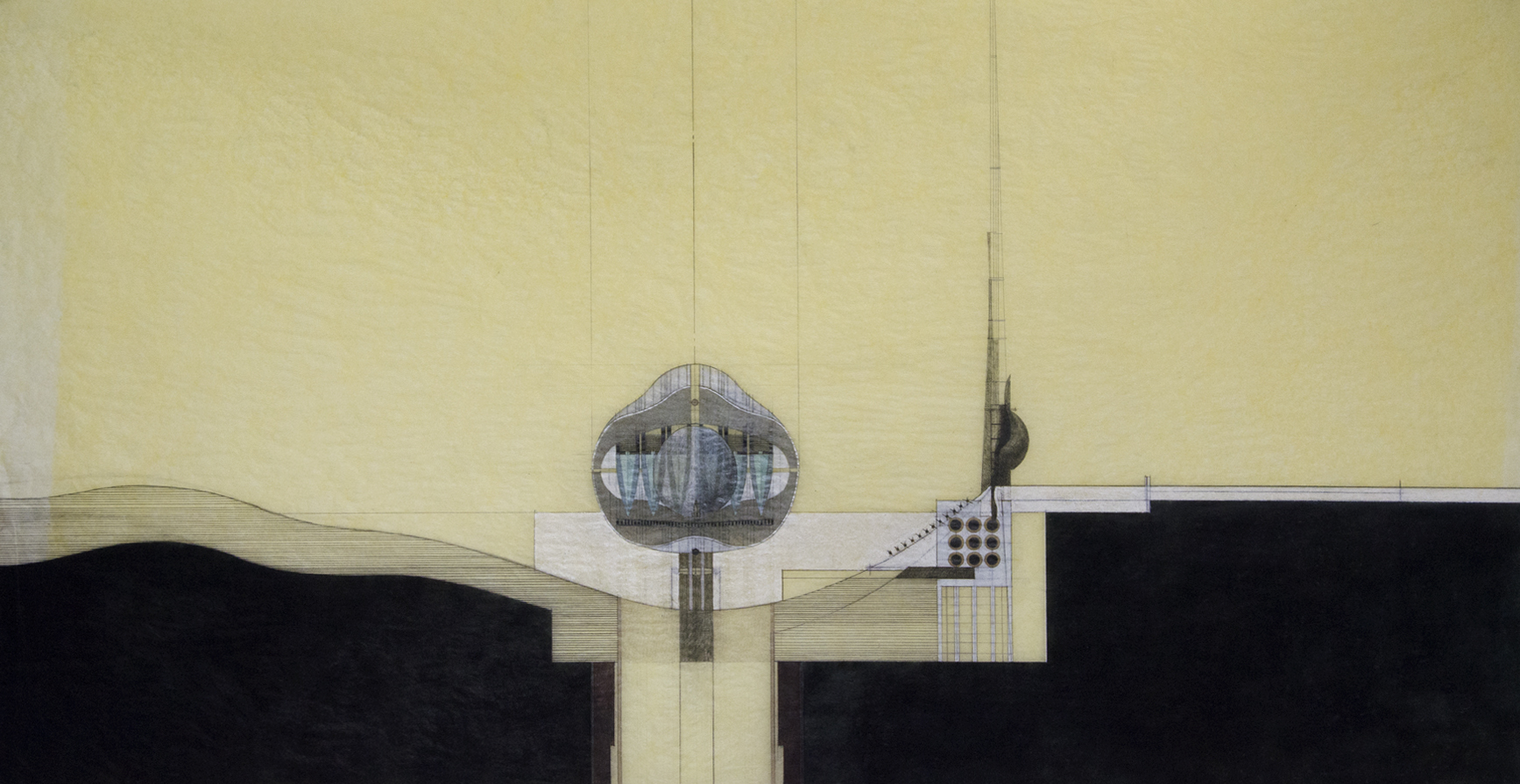
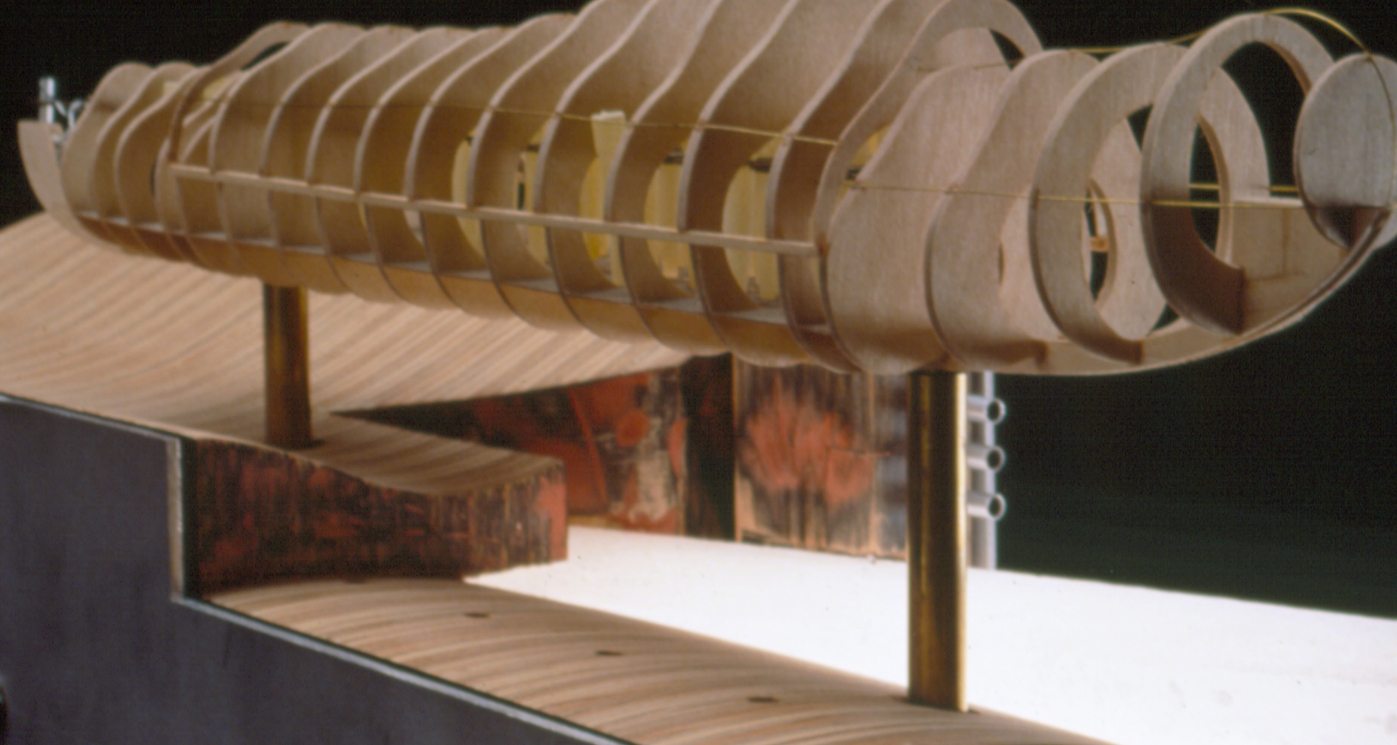
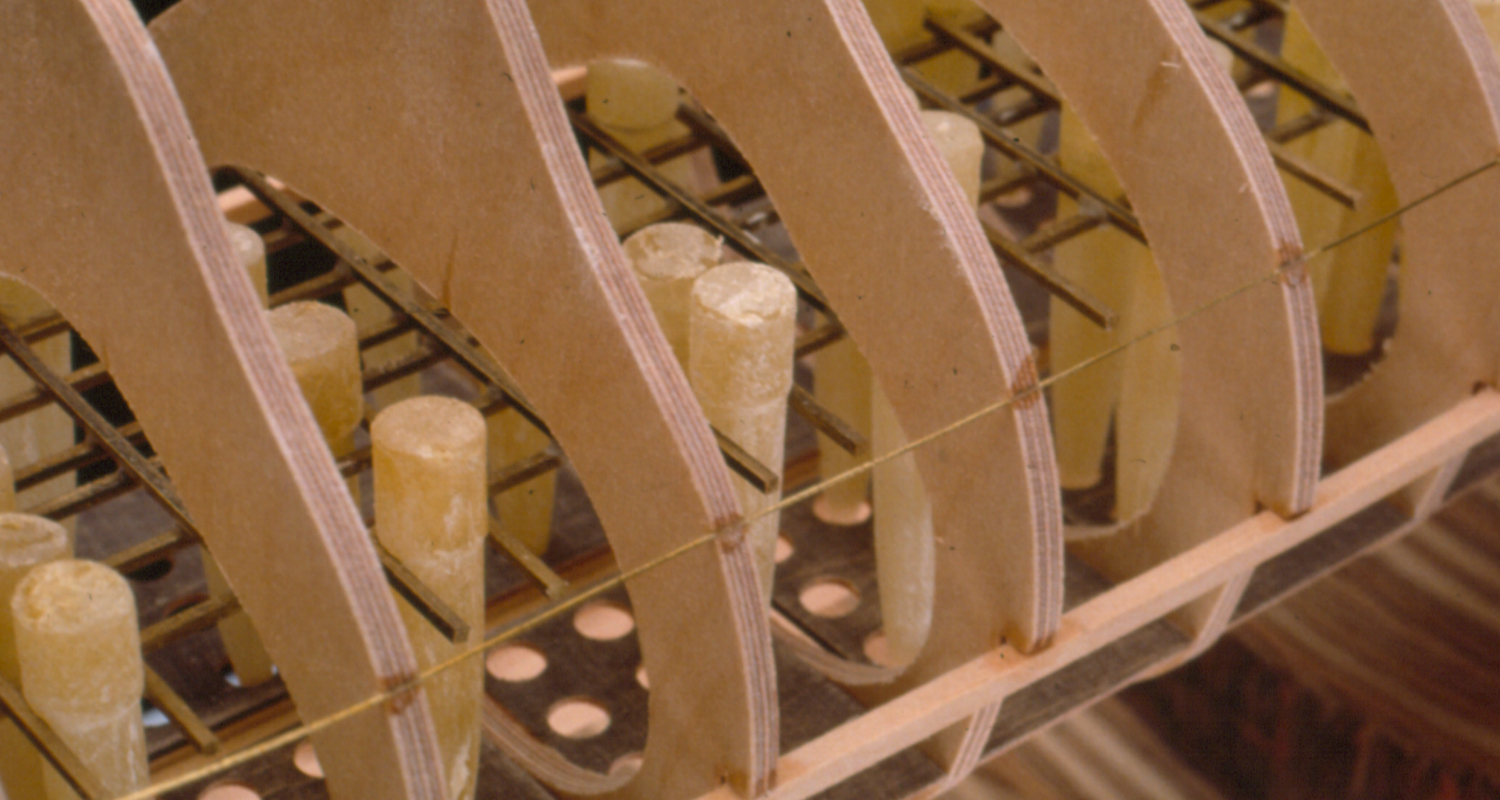
GROUNDED ANGEL - 1992
As we continue to distance ourselves from each other, and separate ourselves from nature, there is a need for symbols that provide connections, establish relationships and achieve balance rather than fragmentation and isolation. This separation between humanity, nature and technology, between art and the built environment is evidenced throughout our culture and our institutions. One of the most glaring and tangible examples is the irresponsible production and disposal of hazardous waste.
The project positions the architect and the public to take responsibility for the toxins accumulating in land fills. It explores the design of a structure to store toxic waste, a place to research methods of transforming the waste and a structure which communicates the consequences of these toxins as well as a way to heal the earth. The site is the Rocky Mountain Arsenal located adjacent to the Denver International Airport. The Rocky Mountain Arsenal was used to produce and store chemicals developed for chemical warfare during the World War II.
The design utilizes the pregnant human form to suggest new life, a regeneration of the earth and rectification of previous exploitation of its resources. Avoiding dominant, vertical language, the structure instead reclines lightly above the earth's surface. As visitors move through the structure they interact visually with the toxins which are encapsulated in glass urns. The structure acts as a monument - a beacon whose form reflects the connection of humanity, nature and technology.
This is an architecture of reclamation. It seeks to identify and create a contemporary sacred site, a place which will introduce ceremony and ritual into our lives. The sacred, in this case, is the act of pilgrimage. participation and involvement in a sacred journey creates a spiritual experience and instills in participants a sense of their place and meaning in society. I am exploring how architecture can express this rite of passage. How architecture can define a physical location where the unification of humanity, nature and technology is celebrated as a healing ceremony.
1995 - Seattle AIA Citation Award
